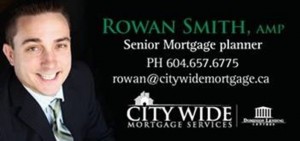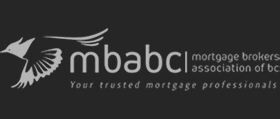“HOW CONDO ASSESSMENTS CAN AFFECT YOUR MORTGAGE”
 One of the largest hassles in getting a mortgage on a condominium is the review of the mountain of strata documents. Borrowers are often left to rely on their realtor alone for their expertise in reading strata minutes and documentation and ensuring that nothing contained within that bevy of paperwork will cause them hardship in the future. While many realtors have become specialists in translating what is within strata documents and meeting minutes to their clients, there are many pitfalls that may appear innocuous on the surface to clients and realtors but that may have a significant impact on the availability of financing.
One of the largest hassles in getting a mortgage on a condominium is the review of the mountain of strata documents. Borrowers are often left to rely on their realtor alone for their expertise in reading strata minutes and documentation and ensuring that nothing contained within that bevy of paperwork will cause them hardship in the future. While many realtors have become specialists in translating what is within strata documents and meeting minutes to their clients, there are many pitfalls that may appear innocuous on the surface to clients and realtors but that may have a significant impact on the availability of financing.
Throughout this article, I will be using the word “condo” to refer to any stratified property: condominium, townhouse, apartment, row house, etc…
A special assessment is essentially a monetary charge from strata for some common expense incurred by the overall strata. The cost is split up across all owners according to their specific unit entitlement. For example, if the roof needs replacing, the strata can use their Contingency Reserve Fund to cover the cost, but if there isn’t enough in the fund, then the extra cost (or all, or part of the cost) is split amongst all owners. This cost has to be paid when assessed, but some stratas might elect to take payment over time or quarterly to soften the financial blow to the owners.
Some of the most attractive deals that buyers find are condos that are one of three very difficult-to-finance stages:
- There is work required, extensively discussed in the minutes, but there has not been a vote yet on what to fix
- There has been a vote to fix the work, but the vote has been only for a “targeted fix” instead of a complete repair
- The work is ongoing and underway
So why are these three situations so hard to finance? The primary answer is “uncertainty.” Banks don’t like uncertainty, especially when it concerns the borrowers ability to repay the loan or weather the storm of any special assessments that might come in the future. Let’s look at each of the three situations above and explore why borrowers will have trouble getting financing on a unit in each stage.
WORK REQUIRED – NO VOTE YET TAKEN
 In this situation, a lender will not want to do a mortgage when they see that there has been extensive discussion in the minutes of work that is upcoming, but for which a proposal and vote has not yet occurred. If, for example, there is mention of “water ingress” (leaking) into specific units, leaking window seals or leaking pipes, roof replacement, or any sort of “envelope repair” then the bank will be asking a lot of questions.
In this situation, a lender will not want to do a mortgage when they see that there has been extensive discussion in the minutes of work that is upcoming, but for which a proposal and vote has not yet occurred. If, for example, there is mention of “water ingress” (leaking) into specific units, leaking window seals or leaking pipes, roof replacement, or any sort of “envelope repair” then the bank will be asking a lot of questions.
Why?
The fear, for the bank, is that there might be a special assessment in the future that our borrower might not have the capacity to pay and could be forced into foreclosure. If this happens, the lender would have to sell the unit and would have a difficult time doing so because of the assessment. Lenders don’t want to be in this situation, and they will often refuse to finance properties that are in this state. The uncertain cost, uncertain time frame, and uncertain ability of the borrower to pay for the upcoming work will all lead to them balking and financing the unit.
TARGETTED FIX
Whenever there is going to be a large repair undertaken, it is usually because there has been an engineering report that specified what needed to be repaired. In most cases, engineers will find a number of things that need to be addressed. For example, they may find that the roof needs replacing, the exterior paint re painted, the parkade re-asphalted, and the fountain water feature out front re-tiled and sealed. However, the owners might look at this list and think, “why both doing all the work and spending the money on the water feature?” They may then vote and begin work to do a “targeted fix” of only 3 of the 4 items that the engineer recommends in an effort to save money. However, this can have the effect of making financing very difficult.
Why?
Engineers aren’t in the business of recommending work that doesn’t need to be done. If they are recommending that the water feature be repaired, it is because they are probably worried about water leaking, possible soil erosion, and other ancillary effects if it is allowed to deteriorate further. The mortgage insurers: CMHC, Genworth, and Canada Guaranty, all want to see a “full fix” voted for in the strata minutes. They want to know that all the items the engineer recommended have been repaired so that there is no uncertainty as to future costs or potential problems. There are many buildings in the lower mainland where people cannot get high-ratio financing (mortgages with less-than-20% down) because of targeted fixes that were done with the best of intentions but which have had negative impacts on the availability of financing. Again, uncertainty of future cost and possible related problems results in financing being difficult to obtain even if 3 of the 4 items are fully repaired and completed.
ONGOING WORK
Even if the repairs to a building are fully voted on for a full fix, fully paid the seller, but are ongoing, this can make financing difficult to obtain.
Why?
Cost overruns are a reality of construction. Oftentimes, contractors or engineers do not know the full extent of the damage or problems until they open up the walls. In my own personal life I owned a condo that an engineer had recommended we replace re paint the siding on the building, re caulk the siding, and replace any of the cedar planks that had deteriorated. The strata voted for a full fix, and we all paid our special assessment.
Once the work began in earnest, it become clear that the south side of the building was far more deteriorated behind the walls than anticipated. As they removed rotten plank after rotten plank, they found that the internal wall structure was in need of repair, and the costs blossomed into a much larger cost than expected. A special general meeting was called, and owners had to vote for a further special assessment that was nearly as much as the original assessment! We all voted for the fix (after all, it had to be done) and the repairs were completed thereafter.
What would have happened if I had sold my unit to a first time home buyer with 5% down thinking that I had already paid the assessment? They would have gotten a very large bill that they couldn’t afford which could have led to a default on the mortgage (or failure to pay the assessment which also can lead to a foreclosure).
The uncertainty of the total cost, even when work has begun, can make financing condos very difficult when work is ongoing. Until the “Completion Certificate” is in hand confirming all the work is done, lenders often won’t want to get involved in any mortgage financing.
BUT THERE HAVE BEEN LOTS OF SALES IN THE BUILDING!
This is a common refrain that I hear when I tell a borrower that the bank won’t finance the building they want to buy in. They will cite two sales that have occurred in the building so “SOME bank must be doing mortgages in the building!” There are a lot of variables at play here. The person that bought that unit may have done so all in cash, or with a very large down payment with evidence that they have more money available to cover assessments and such. Oftentimes, with 35% or more down payment, we are able to get more flexibility depending on which of the three scenarios above is applicable.
This is not to imply that if one of the three scenarios above is present that NO BANK will do a mortgage. Some banks, by virtue of their approval process or relationship with the client, may not do the level of due diligence they would normally or for other clients and they may miss the issue (or elect not to care given the person’s financial strength). There are also many different lenders that are non-banks, trust companies, or private lenders with higher rates that might be willing to take a chance on such a property.
The key takeaway here is that if any of the three situations above is present, you need to ensure you’re working with an experienced broker to help navigate you through the web of rules, strata terms and jargon, and bank concerns. At City Wide Mortgage we have the resources and experience to make sure you are properly taken care of and given insight and awareness of these issues so that there are no surprises for you or the bank in the future.”
Rowan Smith, A.M.P.
Senior Mortgage Planner / Partner, DLC – City Wide Mortgage Services
Direct Line: 604.657.6775
Direct Fax: 1.888.282.5760
E-mail: rowan@citywidemortgage.ca
Website: www.rowansmith.ca
City Wide Mortgage Services
An independent member of Dominion Lending Services
Follow me on TWITTER at http://twitter.com/RowanMsmith
Follow my BLOG at http://mortgagelocator.ca/blog/
Follow me on FACEBOOK at http://www.facebook.com/VancouverMortgageBroker






